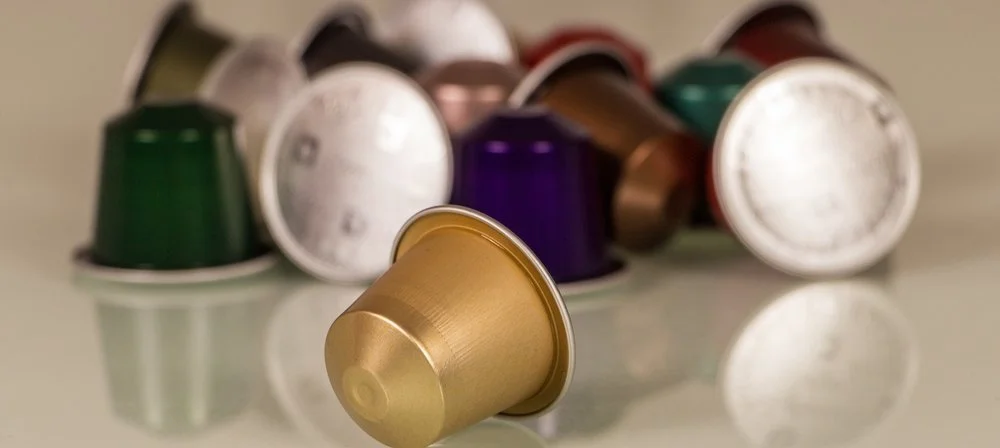Let's Talk about K-Cups
Let’s Talk About K-Cups
One comment I get all the time during tours and tastings is "I would buy your coffee if you sold it in a k-cup." And this is frustrating because our coffee will never be available in k-cups for a bunch of reasons. As many of you know, before I was a farmer I worked as a lawyer at Natural Resources Defense Council in Chicago. So of course I dislike k-cups and other coffee pods for the obvious reasons that they are (mostly) non-recyclable, they are filling our landfills, and they take a HUGE amount of plastic and carbon to produce and transport. Now, before you feel too-judged, I have consumed my fair share of pod-coffee. And if I am honest, there are a lot of things that I do that are bad for the environment in the name of convenience (like driving my car short distances, preferring printed books to my kindle, and using paper towels and plastic ziplock bags). But friends don’t let friends drink bad coffee -- and if you’re reading this, we are friends. As such, I consider it my duty as your friend to try to convince you to ditch your pre-made coffee pods.
So why are k-cups not worth the convenience? First, the coffee inside these mass-produced pods are almost always commodity coffee (which is farmed in many, many parts of the world with child labor and indentured servitude[1][2]) that is very expensive, old, and doesn’t even taste that good. I would love to get onto my soapbox about labor laws and the international coffee industry, but you’ll just have to patiently wait for that uplifting read in a future blog. Let’s focus here on why k-cups are significantly overpriced and why they don’t taste great.
At 10-11 grams of coffee per pod, most k-cup customers are paying around $40/lb for coffee. That is the same price as our coffee - and our coffee is grown, hand-harvested, roasted, and packaged in America. And I promise you, no matter your coffee brewing method, our coffee tastes much better than a k-cup. The main reason k-cup coffee doesn’t taste great is because it’s old and it’s oxidized. Just like a cut avocado sitting on your counter overnight, the oils in pre-ground coffee interact with oxygen and oxidize which makes them taste gross. Keurig and the other pod-makers will claim that the pods are nitrogen sealed to prevent oxidation, but the fact of the matter is that to seal them this way they have to wait over two weeks after roasting to even package the pods (due to degassing) AND the nitrogen seal degrades overtime. Contrary to the claims of the k-cup manufacturers, there’s just no way to stop coffee ground that far in advance of brewing from becoming oxidized.[3]
But what about the convenience? K-cups are just so fast and easy to make. Although they are usually ashamed to admit it to me, a bunch of my closest friends use k-cups every day when they are rushing to get to work or because that is all that is available at their office. The convenience of k-cups is a good point and one that I am not unsympathetic to. But here is my advice: if a k-cupreally is the best option for you, buy a reusable pod and put your own coffee in there! These reusable pods are everywhere and are made for nearly every machine. Even if you grind coffee and fill 7 reusable pods at the beginning of the week, your coffee will still be fresher, tastier, cheaper, and better for the environment than pre-purchased k-cups.
Our goal at Sunshower has always been to grow and help our friends drink great coffee. So if you buy our beans and also buy a reusable coffee pod, the pod’s on us: send me a picture of your receipt, and we’ll refund you the purchase price of one reusable pod. If you’re a daily k-cup user, I think you’ll be surprised and delighted by how easy they are to use and by how much better your coffee will taste. Once you've practiced a couple times, they’re simple to use (here is a great tutorial), and I will personally help you troubleshoot your grind size and ratio if you are having trouble making good coffee. Just give me a call or shoot me an email!
[1] Rice, R. (2003). Coffee Production in a Time of Crisis: Social and Environmental Connections. SAIS Review XXIII(1). 221-245.
[2] Bacon, C. (2005). Confronting the Coffee Crisis: Can Fair Trade, Organic, and Specialty Coffees Reduce Small-Scale Farmer Vulnerability in Northern Nicaragua? World Development, 33(3). 497-511.

